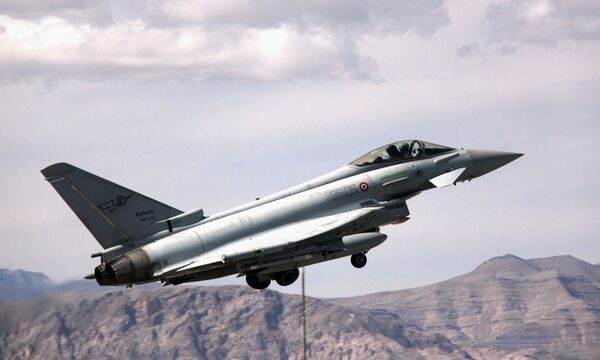
In its economic impact study on the programme, PwC has outlined a ‘growth scenario' that could see the sale of as many as 287 additional Eurofighter combat aircraft. (Janes/Gareth Jennings)
An economic impact study report published by the Eurofighter consortium on 9 April has predicted the potential sale of hundreds more of the multirole combat aircraft to both partner and export countries.
Compiled by PricewaterhouseCoopers (PwC), the Eurofighter Economic Impact Assessment study touts a “growth scenario” of as many as 287 new sales, including some recently contracted but not yet delivered aircraft.
“A base scenario [of the existing fleet of 680 jets to nine countries, plus 83 Quadriga and Halcon I/II buys for Germany and Spain respectively] would sustain a minimum production rate for a few years, but further domestic and export orders are needed,” the report stated.
According to PwC, the growth scenario of new jets needed to sustain production across the four final assembly lines at Manching in Germany, Caselle in Italy, Getafe in Spain, and Warton in the UK beyond the 38 Quadriga and 45 Halcon I/II jets already contracted comprises a further 74 partner country and 130 export country sales.
The report does not posit precisely where these additional sales might come from, although Spain has a potential Halcon III requirement (which is also likely to be contested by the Lockheed Martin F-35 Lightning II) while Germany is expected to acquire more jets to fulfil its Tornado replacement requirement (a Luftwaffe representative told Janes in November 2023 that the anticipated sale of Eurofighter Tranche 5 aircraft for this was “undecided rather than uncontracted”).
Janes
Looking to read the full article?
Gain unlimited access to Janes news and more...







